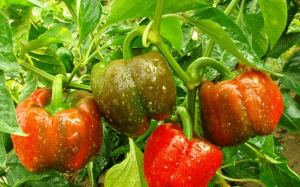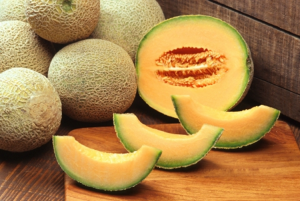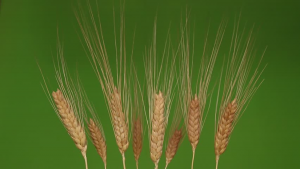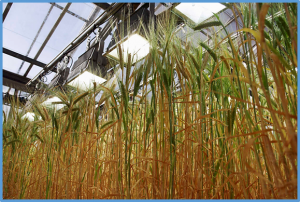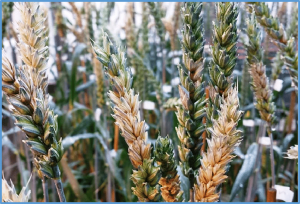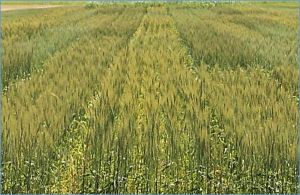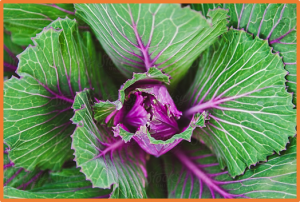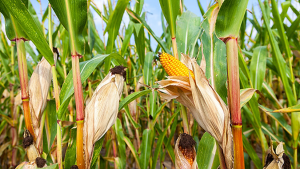The use of cytoplasmic-genic male sterility (CGMS) systems greatly increases the efficiency of hybrid seed production. Although marker development and candidate gene isolation have been performed for the Restorer-of-fertility (Rf) gene in pepper (Capsicum annuum L.), the broad use of CGMS systems has been hampered by the instability of fertility restoration among pepper accessions, especially sweet peppers, due to the widespread presence of the Unstable Restorer-of-fertility (Rfu) locus.
Carpel number (CN) is an important trait in melon. Three-CN melon fruit is oval, while 5-CN melon fruit has a round or flat shape. Herein, a genetic analysis of a population in which the CN locus was segregated indicated that 3-CN is controlled by a major dominant effective gene. Bulked segregant analysis and initial linkage mapping placed the CN locus in a 6.67 Mb region on chromosome 12, and it was narrowed to 882.19 kb with molecular markers and recombinant plants.
Identifying the main genes which mainly regulate the yield-associated traits can significantly increase the wheat production. In this study, gene TaGL3.3 was cloned from common wheat according to the sequence of OsPPKL3. A SNP in the 8th exon of TaGL3.3-5B, T/C in coding sequence (CDS), which resulted in an amino acid change (Val/Ala), was identified between the low 1000-kernel weight (TKW) wheat Chinese Spring and the high TKW wheat Xinong 817 (817).
To elucidate the mechanism underlying the response of rice to heat stress (HS), the transcriptome profile of panicles was comparatively analyzed between the heat-tolerant line 252 (HTL252) and heat-susceptible line 082 (HSL082), two rice recombinant inbred lines (RILs). Our differentially expressed gene (DEG) analysis revealed that the DEGs are mainly associated with protein binding, catalysis, stress response, and cellular process.
Leaf thickness (LT) is an important characteristic affecting leaf functions which have been intensively studied. However, as LT has a small dimension in many plant species and technically difficult to measure, previous studies on this characteristic are often based on indirect estimations. In the first study of detecting QTL controlling LT by directly measuring the characteristic in barley, large and stable loci were detected from both field and glasshouse trials conducted in different cropping seasons by assessing a population of 201 recombinant inbred lines
Fusarium head blight (FHB) is a serious disease in wheat (Triticum aestivum L.) and causes significant reductions in grain yield and quality worldwide. Breeding for FHB resistance is the most effective strategy to minimize the losses caused by FHB; therefore, identification of major quantitative trait loci (QTLs) conferring FHB resistance and development of diagnostic markers for the QTLs are prerequisites for marker-assisted selection (MAS). Ji5265 is a Chinese wheat cultivar resistant to FHB in multiple environments. An F6 population of 179 recombinant inbred lines (RILs) was developed from Ji5265 × Wheaton.
Sparse testing using genomic prediction enables expanded use of selection environments in early-stage yield testing without increasing phenotyping cost. We evaluated different sparse testing strategies in the yield testing stage of a CIMMYT spring wheat breeding pipeline characterized by multiple populations each with small family sizes of 1–9 individuals. Our results indicated that a substantial overlap between lines across environments should be used to achieve optimal prediction accuracy
Anthocyanins are widely distributed in nature and give plants their brilliant colors. Leaf color is an important trait for ornamental kale. In this study, we measured anthocyanin contents and performed transcriptome deep sequencing (RNA-seq) of leaves from pink and green ornamental kale. We observed substantial differences in the expression levels of the two DIHYDROFLAVONOL 4-REDUCTASE-encoding genes BoDFR1 (Bo9g058630) and its ortholog BoDFR2 (Bo2g116380) between green-leaved and pink-leaved kale by RNA-seq and RT-qPCR
Tropical non-elite maize (Zea mays L.) germplasm, such as BS39, provides a unique opportunity for broadening the genetic base of U.S. Corn Belt germplasm. In vivo doubled haploid (DH) technology has been used to efficiently exploit non-elite germplasm. It can help to purge deleterious recessive alleles. The objectives of this study were to determine the usefulness of BS39-derived inbred lines using both SSD and DH methods,
Fusarium wilt, a soilborne disease caused by Fusarium oxysporum f. sp. fragariae, poses a significant threat to strawberry (Fragaria ×× ananassa) production in many parts of the world. This pathogen causes wilting, collapse, and death in susceptible genotypes. We previously identified a dominant gene (FW1) on chromosome 2B that confers resistance to race 1 of the pathogen, and hypothesized that gene-for-gene resistance to Fusarium wilt was widespread in strawberry.


 Curently online :
Curently online :
 Total visitors :
Total visitors :
